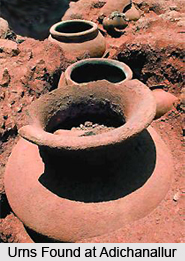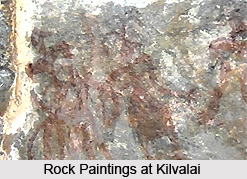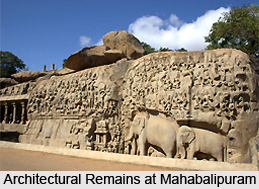 Archaeological sites in Tamil Nadu comprise the places which have witnessed the growth and decline of ancient civilizations and houses relics of the same. Archaeological Survey of India has carried out extensive excavations in these regions and deciphered a number of facts about the socio-cultural life that prevailed in the bygone era. Relics found in these sites consolidate the fact that the people belonging to this region were highly adept in artistry whereas the architectural remains exhibit the blend of different architectural styles. These sites serve the dual purpose of offering numerous evidences to decode the varied aspects of Indian history and popularizing the place as inviting tourist destinations.
Archaeological sites in Tamil Nadu comprise the places which have witnessed the growth and decline of ancient civilizations and houses relics of the same. Archaeological Survey of India has carried out extensive excavations in these regions and deciphered a number of facts about the socio-cultural life that prevailed in the bygone era. Relics found in these sites consolidate the fact that the people belonging to this region were highly adept in artistry whereas the architectural remains exhibit the blend of different architectural styles. These sites serve the dual purpose of offering numerous evidences to decode the varied aspects of Indian history and popularizing the place as inviting tourist destinations.
Adichanallur
Adichanallur, situated in Tirunelveli district is an archaeological site where numerous human skeletons have been found buried in earthenware urns. Through archaeological excavations it has been inferred that the place was previously a fortified town with separate quarters. The place was also a site of industrial activities. The three important discoveries in this site are an inscription in a rudimentary Tamil-Brahmi script, remains of living quarters and a potsherd with beautiful motifs.
Devankuruchi
Devankuruchi is a small village situated near Madurai. Evidences of human inhabitation dating back to 6,000 years ago have been found here. Other findings of ancient period include conch shell bangles, stone beads and red and black wares, all of which signifies the existence of megalithic culture. The place is also associated with Chalcolithic and Iron Age. Both Shaivism and Jainism thrived in Devankuruchi and temples associated with the respective religions still stand here after undergoing renovation in bygone phases. At the foothills a Nayak period hero stone was established in tribute to a hero who died fighting a tiger.
 Ennayiram
Ennayiram
Ennayiram, in Villuppuram district, is another village and was the site of an ancient Vedic college. Tamil inscriptions along with stone beds and a natural cave have been found here. Red and black painted pots belonging to 1st to 2nd centuries CE are the major discoveries of this site.
Kilvalai
Kilvalai, located in Villuppuram district, is famed for its 3000 years old heritage. The place houses rock paintings of 1000 B.C.E. which mainly comprise of bird headed human images. These paintings have greatly illuminated the artistic ability, beliefs and daily activities of old civilizations.
Kodumanal
Kodumanal, in Erode district, was the site of flourishing ancient trade and finds its mention in Patittrupathu of Sangam literature. This ancient city of Chera dynasty was the home of skilled craftsmen specialized in making high-quality iron and beads. Layers of megalithic-cum-early tombs of historic period have been excavated in Kodumanal. Megalithic communities that inhabited in this region belonged to 2nd century BC.
Mahabalipuram
Mahabalipuram is the archaeological site of cairn circles and Megalithic burial urns. Situated in Kancheepuram district, it served as a port city during the reign of Pallava dynasty. Beautiful Pallava architecture can also be witnessed here in the temples and Buddhist monuments. The place houses a number of shrines dedicated to different deities which signifies the growth of sectarianism during the time of construction. Majority of monuments in Mahabalipuram are rock cut and monolithic and also exhibit influences of Dravidian and Buddhist architectural styles. Numerous sculptures, some of which were half finished were also found in Mahabalipuram.

Sembiyankandiyur
Sembiyankandiyur, located in Nagapattinam district, is another significant archaeological site of Tamil Nadu. Excavations have unearthed several ancient artefacts here including a Neolithic tool having engraving similar to Indus script along with four Indus Valley signs which dated to 1500 B.C. Megalithic pottery bearing graffiti symbols have also been excavated in Sembiyankandiyur.
Thirunandikkara Cave Temple
Thirunandikkara cave temple is an ancient rock cut temple situated in Kanyakumari district. The temple dates back to 7th century CE and was originally established by Jains but later it got converted into a Hindu shrine. It houses faded outlines of former frescos which depict scenes from Mahabharata and Ramayana. These are the testaments of oldest Kerala style of murals.
Other Archaeological sites in Tamil Nadu
Apart from these, other archaeological sites in Tamil Nadu include Brahmadesam, Cholapandiyapuram, Gangaikondacholapuram, Jambai village, Keelathooval, Kuadam, Mahendravadi, Narthamalai, Panamalai, Ram Karmabhoomi, Shore Temple, Sittanavasal Cave, Subrahmanya Temple, Thirakoil, Thirucharanathumalai, Thirukkadigai, Thirumeyyam and Vilapakkam.



















